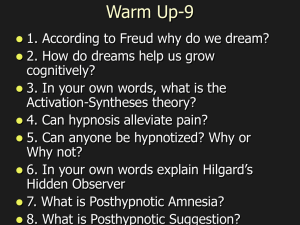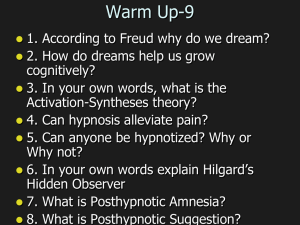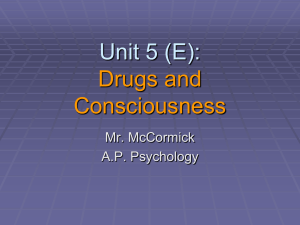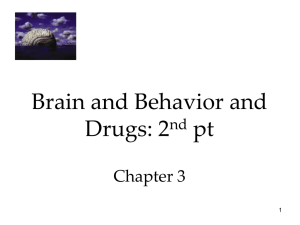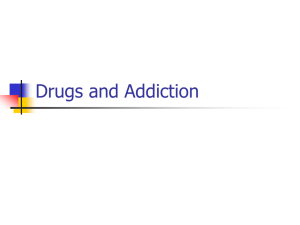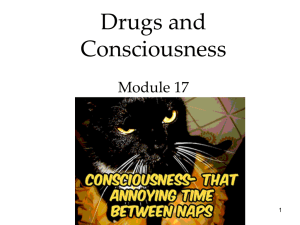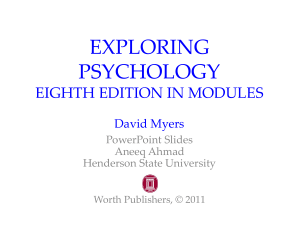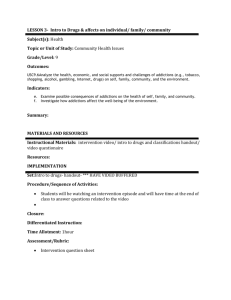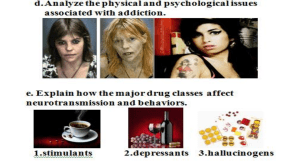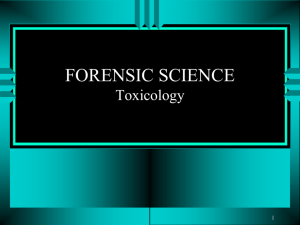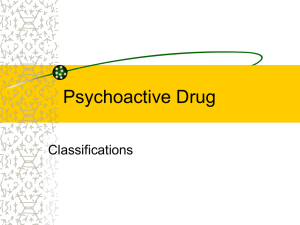Drugs PPT
advertisement
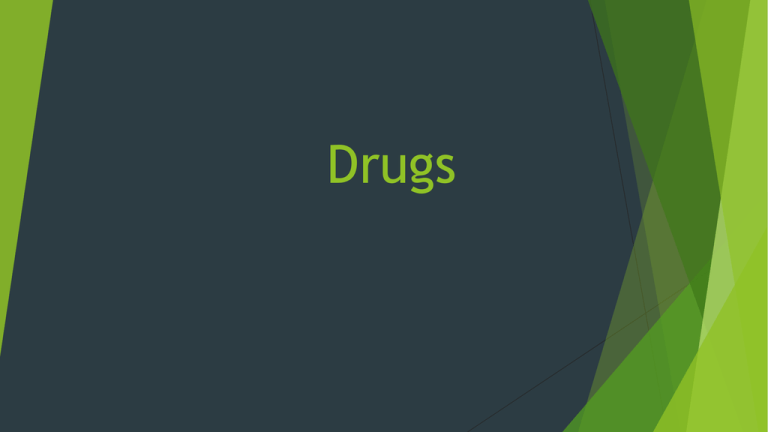
Drugs At your table… Create a definition for “addiction” Now… List as many things as you can that one can be addicted to There is still debate about whether or not non-drug dependencies (Do they qualify under the “addiction as a disease” model?) American Psychiatric Association 2013 A person may be diagnosed with a substance use disorder when drug use continues despite significant life disruption. Resulting changes in brain circuits may persist after quitting use of the substances (leading to cravings). From Myer’s Psychology for AP 2nd Edition The severity of substance use disorder varies MILD (2-3 Symptoms) MODERATE (4-5 Symptoms) Impaired Control 1. Uses more substances, or for longer, than intended. 2. Tries unsuccessfully to regulate substance use. 3. Spend much time gaining, using, or recovering from substance use. 4. Craves the substance Social Impairment 5. Use disrupts obligations at work, school, or home. 6. Continues use despite social problems. SEVERE (6+ Symptoms) 7. Use caused reduced social, recreational, and work activities. Risky Use 8. Continues use despite hazards. 9. Continues use despite worsening physical or psychological problems. Drug Action 10. Experiences tolerance (needing more substance for the desired effect. 11. Experiences withdrawal when attempting to end use. Psychoactive Drugs Drugs that affect the brain at the synapse Stimulate, inhibit, or mimic neurotransmitters Three Types Depressants Stimulants Hallucinogens Depressants Drugs that calm neural activity and slow body functions Alcohol Slows brain activity that controls judgment and inhibitions The urges you would have sober are the ones you are more likely to act upon if intoxicated. Barbiturates Tranquilizers that mimic alcohol Prescribed to help sleep and reduce anxiety Opiates Opium and its derivatives (morphine and heroin) For a short time, blissful pleasure replaces pain & anxiety Stimulants Excite neural activity and arouse body functions Use to stay awake, lose weight, boost mood, athletic performance Cocaine Gives a “rush” of euphoria Blocks reuptake of dopamine, norepinephrine and serotonin Ecstasy Major effect is to release serotonin “I love everyone” Leads to dehydration Long term use can damage serotonin production and lead to permanently depressed mood Hallucinogens Distort perceptions and evoke sensory images in the absence of sensory input LSD An acid trip can lead to euphoria or detachment or panic Begins with geometric shapes Next phase can be meaningful images At its peak , user can feel separated from their body leading to panic and self-inflicted harm Marijuana Difficult to classify Relaxes like alcohol Mild hallucinogen Research Time Tomorrow we will meet in a computer lab You will have ONE class period to research and create a PPT to present the next day

